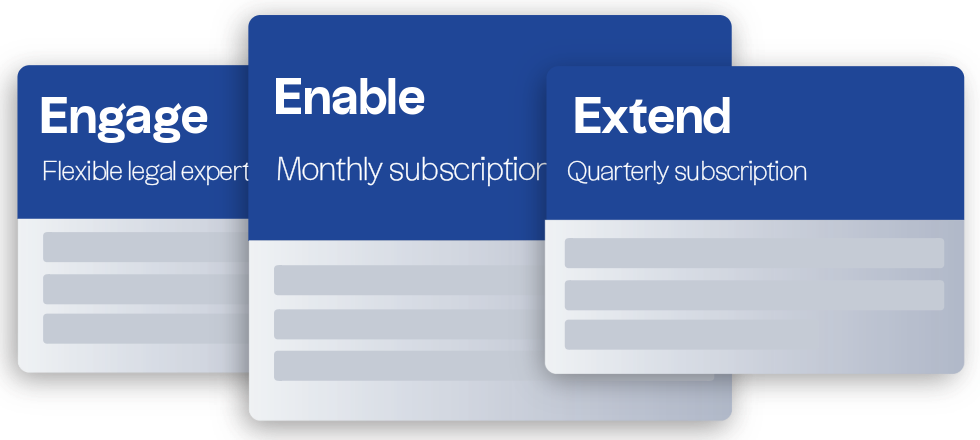You are scrolling through your feed when you see it. Your product photo, your words, your creative work, sitting proudly on another company’s website or social media post. Same image. Same copy. Only their logo in the corner instead of yours. It is infuriating. You have poured time, budget and imagination into creating content, and now someone else is using it as their own. But you don’t have to just grit your teeth and move on.
In the UK, copyright protection arises automatically. From the moment you create something original, whether that’s website copy, product photography, video content or software source code, you own it. And when someone uses it without permission, you have the right to take action. This guide explains exactly how to do that: how to identify infringement, gather solid proof, contact the infringer, and issue takedown notices that work.
If you would rather not navigate platform portals or draft your own legal correspondence, our copyright lawyer can manage the process for you. Engaging with us also demonstrates that you are serious about protecting your rights and ensures that your case is handled professionally from the outset.
Jump to:
What is copyright?
Copyright is your legal protection for the creative work your business produces. It covers original materials like text, photographs, videos, music, designs, software code and the creative selection or arrangement of the data in databases.
Unlike trade marks or patents, there is no registration process for copyright in the UK. The protection is automatic, it arises the moment your work is created and recorded in some way. You don’t need to add a © symbol or file anything with the government.
In practical terms, that means everything from your website copy to your brand photography is protected. Only you, as the copyright owner, can decide how that work is used, shared, or adapted. Anyone reproducing it without permission may be infringing your rights.
Why is copyright important?
Your creative output represents investment: design fees, marketing spend, time and expertise. Copyright protection ensures that investment stays yours. It prevents others from misusing your materials, benefiting from your work, or confusing your customers.
It also strengthens your commercial position. Copyright allows you to license your content, partner with others on clear terms, and assert ownership if disputes arise. Without it, you are vulnerable to copycats who can dilute your brand and undercut your effort.
When you take action against infringement, you are not just defending a piece of work, you are defending your brand’s credibility and your right to fair competition.
Common scenarios where copyright is infringed
Infringement is rarely dramatic. It usually shows up quietly through a competitor using your product photos, a marketplace listing that mirrors your descriptions or a video snippet from your campaign reposted without permission.
Maybe an old supplier has reused your design in their own brochure. Maybe someone scraped your blog content for their site. Or maybe a reseller has uploaded your entire catalogue to Amazon or eBay, passing off your brand as theirs.
Under UK law, infringement can occur even when only a “substantial part” of a work is copied and “substantial” refers to quality, not quantity. So even small extracts can breach your rights if they capture the creative essence of your work.
Spotting these issues early is key. The longer infringing content stays online, the more it spreads, and the harder it becomes to remove.
What should I do if my copyright is infringed?
When you discover someone has used your content without permission, stay calm but act decisively. Here’s how to manage the process effectively:
Document the infringement
Your first step is to collect evidence. Ideally, you would instruct a copyright solicitor to do this for you. Your copyright solicitor will likely take full-page screenshots showing the infringing content, the entire webpage, and any relevant timestamps or URLs. If it’s on a marketplace, they will include product IDs, seller profiles or ASINs.
It is important that you keep copies of your original files too, including any metadata or creation dates that show when and how the work was produced. Record a brief timeline of events: when you spotted the issue, what you did first, and any communication received.
This may feel tedious, but may be needed. A well-organised record can make the difference between a fast resolution and a drawn-out dispute.
Use a solicitor to contact the infringer informally
A copyright solicitor will often send a professional, non-confrontational message to the person or business using your work. Explain that you have noticed the material, that you’re the copyright owner, and that you’d like it removed.
Many businesses comply straight away once they understand they have breached copyright.
If you are ignored, or the use looks deliberate and commercial, you can then move to formal action.
Send a cease and desist letter
A cease and desist letter formally sets out your claim. It identifies your work, explains how it’s been infringed, and demands immediate removal or agreement to cease further use.
Having a solicitor draft it helps you hit the right tone - firm, accurate and legally sound. It also signals that you’re serious, which often prompts faster compliance.
You can learn more about the structure and content of these letters in our cease and desist letter guide.
Submit a takedown notice
If the infringing content is online, the fastest route is to use the platform or host’s own reporting tools.
For marketplaces and social media platforms like Amazon, eBay, Etsy, Meta, or TikTok, use their dedicated intellectual property reporting forms. They are designed to minimise risk for the platform and usually act quickly when claims are well-supported.
For standalone websites, you can identify the web host using tools like WHOIS and send them a “notice and takedown” email. This formally notifies them of the infringement and asks that the content be removed or disabled.
Include in your notice:
- Your identity and authority (rights holder or authorised representative).
- Proof of ownership or an explanation of how the work was created.
- Clear URLs or product IDs showing the infringement.
- A concise, factual statement that your claim is made in good faith.
A well-evidenced notice gets faster results. If you are unsure how to phrase it, we can help draft it in line with each platform’s legal and procedural requirements.
Seek legal advice or court action if informal steps fail
If the content remains online or the infringer refuses to cooperate, it's time to escalate. The Intellectual Property Enterprise Court (IPEC) provides a cost-effective small claims route for copyright disputes up to £10,000.
While the process is designed to be straightforward, instructing a solicitor can make a significant difference. A solicitor will help you prepare clear evidence and guide you through claiming damages or requesting an injunction to stop further infringement.
In more complex or higher-value cases, your solicitor can advise on negotiation strategies, settlement discussions, or formal litigation. Their expertise can ensure your rights are protected and give you the best chance of a successful outcome.
What are the remedies for copyright infringement?
If informal steps and takedown notices do not solve the problem, a copyright infringement claim can provide you with several formal remedies.
- Removal: The quickest outcome - the infringing material is taken down.
- Injunctions: A court order preventing the infringer from using or distributing your work further.
- Damages: Financial compensation for the loss you have suffered or harm to your brand.
- Account of profits: Requiring the infringer to hand over profits earned from your work.
For most businesses, a strong initial notice and a credible threat of legal follow-up are enough to achieve removal and resolution without a full court case. But it is reassuring to know the legal tools are there if you need them.
How do I prevent copyright infringement?
Once your immediate issue is resolved, it’s worth tightening your prevention processes.
Use only original or properly licensed materials, and keep copies of your licence agreements or purchase receipts. When commissioning external content from freelancers or agencies, ensure your contracts clearly transfer copyright ownership to your business.
Keep an organised library of your creative assets, including original files and creation and version dates. This makes it easier to prove ownership later.
Use the copyright symbol on your website or next to your work to put the world on notice of your rights and update the year as needed.
Before posting new content, double-check it doesn’t include third-party material, even small snippets of music or imagery can create problems.
For fast-growing brands producing regular content, a periodic copyright audit can help identify gaps and ensure everything you are publishing is legally secure.
Summary
Copyright protection arises automatically in the UK the moment you create original work. If someone uses your content without permission, don’t ignore it, act quickly, methodically and professionally.
Gather your evidence. Contact them clearly. Use takedown tools or send formal letters if needed. Escalate only when necessary, and always keep your communication factual and calm.
By defending your copyright, you are not being heavy-handed, you are protecting your business, your investment and your creative integrity. network of contemporaries across the globe that we will work with to support you in securing a successful resolution to your dispute.

